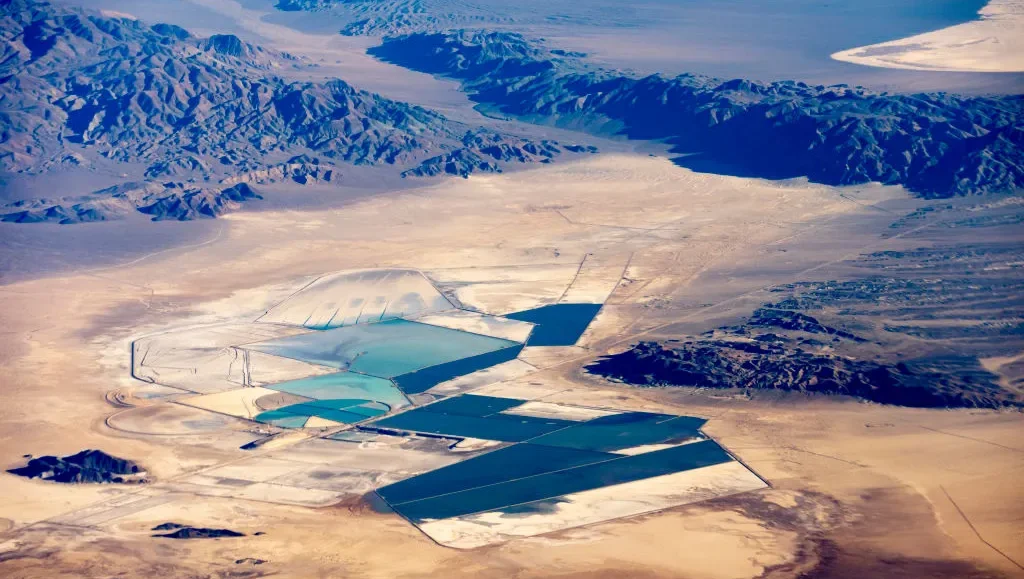
LITHIUM: The Biden administration greenlights the proposed Rhyolite Ridge lithium and boron mine in Nevada even though advocates insist the work will drive the endangered Tiehm’s buckwheat to extinction. (Associated Press)
OIL & GAS:
GRID: Backers of the California grid operator’s Western day-ahead power market and transmission organization expect state lawmakers to pass legislation allowing for regional governance. (RTO Insider, subscription)
HYDROGEN: Developers propose an off-grid, solar-powered green hydrogen production facility and distribution hub in California’s Inland Empire. (news release)
UTILITIES:
CARBON CAPTURE: A California county allocates $900,000 toward a project designed to convert wildfire mitigation waste into carbon-sequestering biochar. (The Union)
CLIMATE:
TRANSPORTATION: Colorado local officials and advocates urge the state to expand a proposed passenger rail line to several other communities in the western part of the state. (Vail Daily)
COMMENTARY: A Colorado journalist says a U.S. EPA enforcement action against an oil and gas operator in New Mexico may herald a new era for the San Juan Basin energy “sacrifice zone.” (Land Desk)
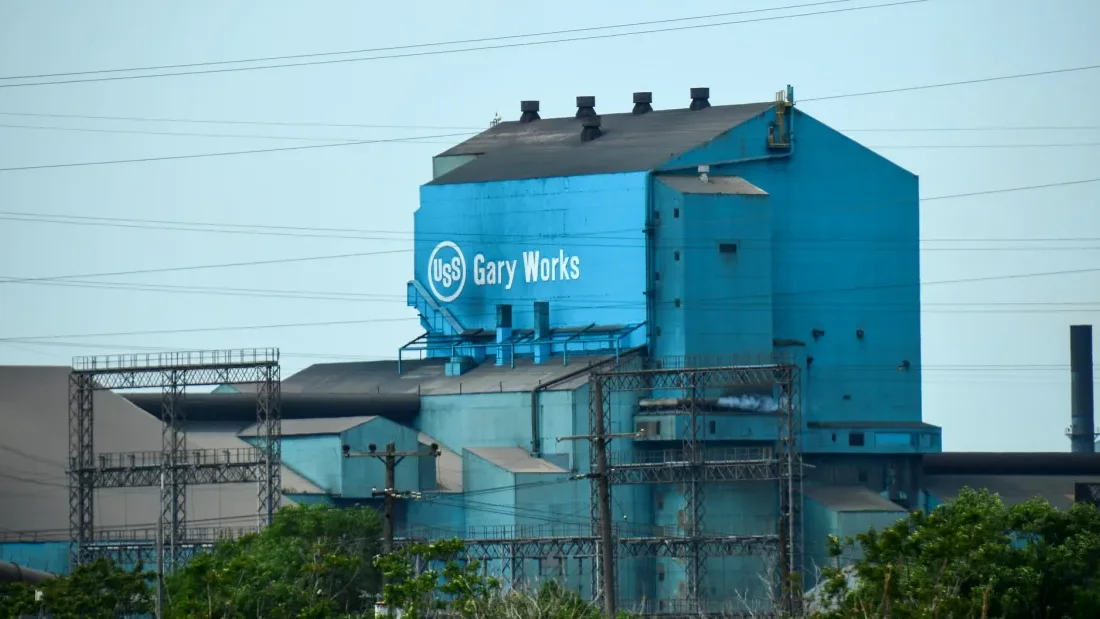
A prospective buyer’s recent commitment to reinvest in a Gary, Indiana, steel plant sought to address union and government leaders’ worries about the sale’s potential impact on jobs and U.S. steelmaking capacity.
The plan to extend the life of the country’s largest and most carbon-emitting coal-fired blast furnace, however, has also heightened concerns from Northwest Indiana residents most affected by the facility’s air pollution.
“This is not acceptable,” said Susan Thomas, director of legislation and policy for Just Transition Northwest Indiana. “We now have technology for doing this much more sustainably.”
A study released Monday quantifies the public health threat highlighted by local clean air advocates, linking the Indiana plant to dozens of annual emergency room visits and premature deaths, as well as thousands of asthma attacks.
Japan-based Nippon Steel is seeking approval from U.S. regulators for a $15 billion acquisition of U.S. Steel, the storied domestic steelmaker whose facilities include the Gary Works plant in Northwest Indiana, along with others in Ohio, Michigan and Pennsylvania, key battleground states where the proposed sale has been a subject of presidential campaigning. Vice President Kamala Harris and former President Donald Trump oppose the sale, as does President Joe Biden.
Much of the public discussion around the proposed sale has centered on its economic and national security implications, but those living near the plant have different concerns and demands. They say they’ve suffered for too long from steel industry pollution, and they only want Nippon as a neighbor if the company installs a new type of furnace that burns with lower or even zero emissions.
“I would love to see Gary Works transform to green sustainable steel, bringing more jobs, cleaning up the area, that would be an amazing win-win,” said Libré Booker, a librarian who grew up near the mill. “The people have lived under these conditions for far too long. It’s definitely time for a change.”
Gary Works is the largest integrated steel mill in North America, employing about 2,200 people. Northwest Indiana is also home to two other steel mills — Burns Harbor and Indiana Harbor — and two coke plants that turn coal into the high-density raw material for steel.
The populations in a three-mile radius of the Gary Works and Indiana Harbor steel mills are 96%-97% people of color, and almost two-thirds low-income people. The new study by Industrious Labs, a nonprofit focused on emissions reduction, used the EPA’s COBRA model to find emissions from the Gary Works plant likely are linked to 57-114 premature deaths, 48 emergency room visits and almost 32,000 asthma attacks each year.
The report cited the mills’ and coke plants’ emissions of sulfur dioxide, nitrogen oxides, carbon monoxide, particulate matter, and lead, all pollutants with direct impacts on public health. Gary Works is the number one emitter of PM2.5 particulate matter in the state, according to the company’s self-reported data analyzed by Industrious Labs.
Industrious Labs steel director Hilary Lewis said the results bolster the demands of clean steel advocates, who want to see coal-fired blast furnaces replaced by direct-reduction iron, or DRI, furnaces powered by hydrogen made with renewable energy, known as green hydrogen.
Booker was among 15 locals who participated in a recent “Sustainable Steel Community Cohort” run by Industrious Labs, attending five workshops learning about the science and policy of cleaner steel.
Green hydrogen is still not produced in large quantities anywhere in the U.S., and all the hydrogen currently produced in the country would not even be enough to power one steel mill, noted Seth Snyder, a partner in the Clean Energy Venture Group, at a recent conference in Chicago focused on clean hydrogen.
But DRI furnaces can be powered by natural gas, which results in much lower emissions than coal. Cleveland Cliffs — which owns the Indiana Harbor and Burns Harbor mills — is transforming its Middletown, Ohio steel mill to gas-burning DRI with the help of a $500 million incentive under the Inflation Reduction Act. The company says the conversion will make it the steel mill with the lowest emissions in the world.
With some modifications, DRI furnaces can burn a blend of natural gas and hydrogen or almost entirely hydrogen, experts say, meaning investment in a gas-burning DRI furnace could be a step on the way to “clean steel.” Lewis and other advocates, however, say gas-burning furnaces are not their goal, and they want the industry to transition off fossil fuels entirely.
Hydrogen can be blended into fuel for traditional blast furnaces too, but the maximum emissions reductions that can be achieved that way are 21%, according to a paper on hydrogen-powered steel production in Europe by the Norwegian non-profit science organization Bellona.
Nippon has announced it would invest $300 million in restoring the aging blast furnace at Gary Works, keeping it running for another 20 years. Installing a DRI furnace, meanwhile, typically costs over $1 billion.
“There is a gap,” said Lewis. “But these companies have the funding available. They have the money to make these decisions, they’re just choosing not to.”
The IRA incentives tapped by Cleveland Cliffs are no longer available, but this summer California U.S. Rep. Ro Khanna introduced the Modern Steel Act, which would provide $10 billion in low-cost loans and grants, plus tax breaks and other incentives for new and revamped low-emissions steel mills, including hydrogen-fueled DRI.
Separately, lucrative tax credits soon to be available for “clean hydrogen” under the IRA could also make hydrogen-powered steel more financially viable. The specific rules for the tax credit — known as 45V — are still being finalized, amid controversy over what should qualify a project’s hydrogen as “clean.”
“There are a number of different incentives in the IRA that can help steel companies build out their own green hydrogen infrastructure,” Lewis said. “Everything should be on the table. Steel companies would be such huge off-takers for green hydrogen, they can build their own economy here.”
At the BP Whiting oil refinery, 10 miles from Gary Works, there are plans underway for production of blue hydrogen, or hydrogen made with natural gas followed by capture and sequestration of the emissions. The plan is a marquee part of the Midwest (MachH2) hydrogen hub, one of seven planned hubs nationwide slated to receive $7 billion total in federal funding. Such blue hydrogen could be used to power a steel mill, with theoretically no resulting greenhouse gas or public health-harming emissions.
However, local environmental and public accountability leaders are strongly opposed to blue hydrogen production in the region, since carbon sequestration has not yet been done successfully on a large scale in the U.S., and it would entail pipelines carrying carbon dioxide from the refinery to a sequestration site.
“The carbon capture component makes us very nervous, it seems to me they’re rushing into this without really taking the time to study it more seriously,” said Northwest Indiana resident Connie Wachala, another graduate of the sustainable steel program. “That might be because of all the money DOE is making available to industry. I wish our elected and industry officials would start thinking more creatively about how to make [green hydrogen] happen, how to make things better for the people in the neighborhoods and around the steel mills as well as for the shareholders.”
All four of Wachala’s grandparents came from Poland to work in the steel mills.
“Growing up in the 1950s, I remember my mom hanging the laundry up in the yard on a clothes line. If the wind was blowing a certain way, you’d get black particles on the clothes,” remembered Wachala, who worked as a creative writing teacher before retiring. “My dad’s car was always covered with that soot.”
Booker’s mother worked as a crane operator at the now-closed Bethlehem Steel mill in Burns Harbor, Indiana — among the first wave of women of color to be hired.
“I was proud she worked in the mill and took care of us, but I did not want [that job] whatsoever, seeing her come home every night after the swing shift, with the big old boots and jacket,” said Booker. “I wanted to go to college. It was a source of contention with my mom and I for some years.”
That was in the days when locals largely believed, “if you want a good partner, you’ve got to get one that works in the mill,” she continued. “It was like a prestigious job and position. People looked up to people who worked in the mill.”
Now, Booker laments, “Gary is like a joke,” scorned for its economic decline since the steel industry automated and shrunk — hemorrhaging jobs, and for the pollution that is still emitted. If the merger with Nippon does not go through, it’s widely believed U.S. Steel would eventually close the mill, as it closed its South Works plant in Southeast Chicago decades ago. At their height, the South Works and Gary Works plants together employed about 40,000 people in the Chicago area.
Thomas wrote a frustrated rebuttal to the Chicago Tribune editorial board opining that the Nippon merger was crucial to Gary’s future. She and other local leaders say they don’t want the mill to close, but they can demand better than the extension of heavily polluting industry.
“It’s just perpetuation of this as a sacrifice zone,” said Thomas. “‘This is what you’ve always been, this is how we’re going to keep you.’ But that’s not going to fly anymore.”
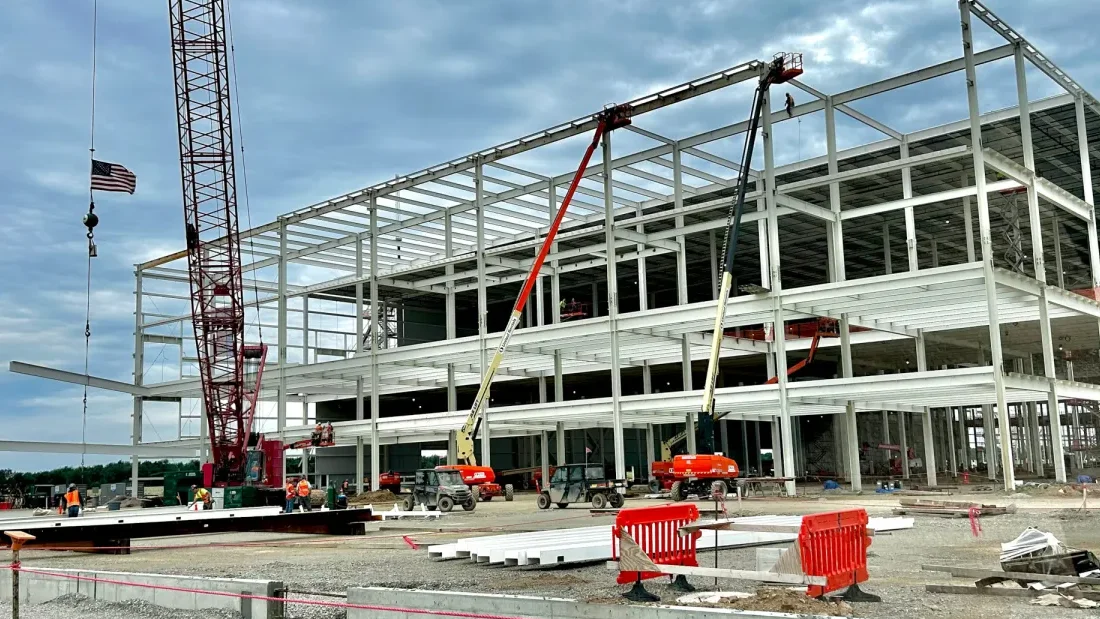
The following commentary was written by Mel Mackinm, director of state policy at Ceres, a nonprofit that works with investors and companies to advance clean energy policy. See our commentary guidelines for more information.
Look out across Michigan and you’ll see groundbreakings for major solar panel manufacturing sites, huge investments to build battery cells, and sparkling new facilities to ensure the state stays in the driver’s seat as the auto industry moves into the future.
It seems Michigan manufacturing is having a moment.
It’s little wonder why. Michigan has always had the legacy, the workforce, the supply chains, and the know-how to serve as the epicenter of an American manufacturing renaissance. That’s exactly what’s happened since Congress finalized the nation’s largest-ever clean energy investment in the summer of 2022.
Powered by incentives for companies to manufacture and deploy clean energy infrastructure and technology here in the U.S., the Inflation Reduction Act has unlocked more than $360 billion in private-sector investment in less than two years, according to research from Climate Power. Its impact has been felt in every corner of the country with hundreds of new projects taking shape to build innovative technologies, employ hundreds of thousands of workers, and power the economy – all while cutting costs and pollution. But no other state has seen as much activity as Michigan, the site of 58 new clean energy projects.
Michigan policymakers deserve some credit for moving quickly to take full advantage of this opportunity. In 2022, Gov. Gretchen Whitmer made clear in her MI Healthy Climate Plan that she wanted to make Michigan one of the best places in the world to build and deploy clean energy. Lawmakers since followed her lead with legislation that will move the state to 100% clean electricity by 2040 and ensure clean power infrastructure can be built both quickly and responsibly – a pair of laws that boasted ample support from Michigan companies that recognize confronting climate change is also an economic opportunity.
These policies were designed to fully harness the Inflation Reduction Act, making clear that the state is ready to support the growing number of businesses that supply or rely on innovative clean technology. In response, businesses that include classic Michigan manufacturers like GM, global brands like Corning, and upstarts like Lucid Motors have flooded the state with more than $21.5 billion in new clean energy innovation and manufacturing investment, creating some 20,100 new jobs.
With projects located from Detroit to Holland to Traverse City, so much of the state is already benefitting. That includes communities that have so far been left behind in the 21st century economy. About half of the state’s recent clean energy investment is located in rural or low-income areas, such as Norm Fasteners’ $77 million facility that will create 200 electric vehicle supply chain jobs in Bath Charter Township.
Now is not the time to slow down. We are now in the throes of the 2024 election, and we all know Michigan has been getting a lot of attention. No matter what happens in November, Michigan and the U.S. must continue investing in this revamped manufacturing base. Policymakers on both sides of the aisle have prioritized rebuilding American industry to provide good jobs and bolster U.S. leadership
Michigan’s clean energy manufacturing boom provides clear evidence that this shared goal is coming to fruition. Policymakers at both the federal and state levels, along with leaders in the private sector, must maintain this momentum and the strong policy environment that will allow the U.S. and its workforce to lead the global economy in the emerging industries of the future – with Michigan, as it so often has, standing strong as the foundation.

It’s been a year since the Energy Department announced long-awaited funding to help establish a network of regional clean hydrogen hubs across the country. We’re still waiting for something to come of it.
Hydrogen is hoped to one day play an important role in decarbonizing heavy industry, replacing natural gas in areas where clean electricity isn’t a practical substitute. The problem: most hydrogen produced today is made from fossil fuels using a method that emits significant greenhouse gasses.
Last October, the DOE announced it would provide $7 billion to jumpstart seven regional hubs to produce, store and transport a low-emission version of the fuel. The grants were supposed to help attract needed private investment, and hubs need to have a detailed plan ready within the next few months before they’re eligible for more federal funding.
But so far, the projects haven’t publicly disclosed how those plans or investments are coming along, Canary Media reports. The hubs also haven’t shared their potential climate and community impacts — factors that have left advocates especially concerned. After all, hydrogen hasn’t been produced on such a big scale before, and it’ll take a lot of renewable power — or carbon capture — to make it happen.
The Appalachian Regional Clean Hydrogen Hub, which aims to burn natural gas to create hydrogen in Pennsylvania, Ohio and West Virginia, provides a hint at some potential problems. A new report reveals a third of the projects slated to be part of the ARCH2 hub have been canceled, and four of its development partners have left.
ARCH2 leaders told Inside Climate News that “adjustments were expected” as the project evolved. But some companies say they withdrew from the project because it still wasn’t clear how they’d access federal hydrogen tax credits, and that’s an issue projects across the country don’t have an answer for either.
⚡️ It’s the “age of electricity:” The world is entering an “age of electricity,” the International Energy Agency says, noting global power demand is rising faster than expected but also predicting countries will build enough solar, wind and nuclear power to meet that demand by 2030. (Axios, New York Times)
🌀 Big grid boost: The U.S. Energy Department announces $2 billion in grants to shore up and expand the power grid, including a previously announced $612 million for areas wracked by Hurricanes Helene and Milton. (Canary Media)
🏭 Emissions crackdown continues — for now: The U.S. Supreme Court declines to pause the Biden administration’s power plant emissions rule as it faces legal challenges, though Justice Brett Kavanaugh’s opinion suggests those challenges may ultimately be successful. (Associated Press, E&E News)
💰 A “bad deal” on fossil fuel taxes: Newly required disclosures to U.S. financial regulators reveal for the first time the billions of dollars fossil fuel companies have paid to world governments — and suggest the U.S. is likely “getting a bad deal” by not charging higher taxes on resource extraction. (Inside Climate News)
🧰 Heat pumps cool down: Analysts and observers say heat pump deployment has slowed due to construction trends and the fact that federal incentives target consumers, not contractors. (Washington Post)
🏛️ Ancient advice: Researchers learn from ancient Roman concrete as they look to devise lower-carbon alternatives to what’s used today. (New York Times)
🔨 Delay the array? Homeowners looking to install rooftop solar panels often run into a dilemma when they learn their roofs will need to be replaced before the lifespan of their array expires. (Grist)
🏠 Talk about inefficiency: Twenty-three states have yet to submit plans to access billions in federal funding in homeowner rebates for energy efficient upgrades, while some states are already offering the incentives. (Houston Chronicle)
🇺🇸 Plus, some politics
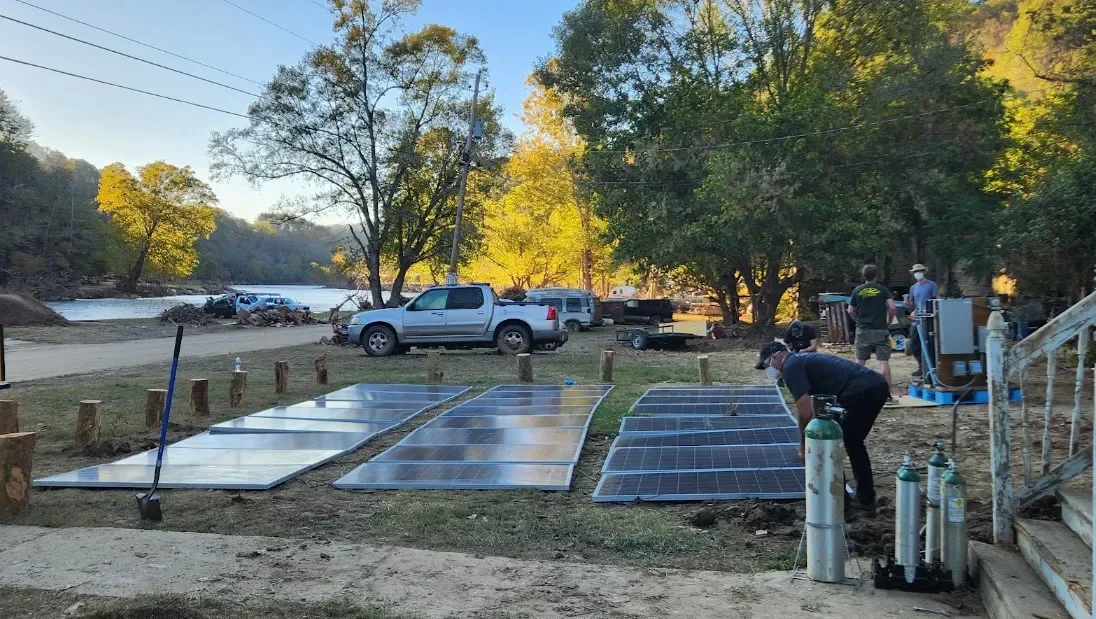
Seventeen days after Hurricane Helene devastated Western North Carolina, tearing down power lines, destroying water mains, and disabling cell phone towers, the signs of relief were hard to miss.
Trucks formed a caravan along Interstate 40, filled with camouflaged soldiers, large square tanks of water, and essentials from pet food to diapers. In towns, roadside signs — official versions emblazoned with nonprofit relief logos and wooden makeshift ones scrawled with paint — advertised free food and water.
And then there were the generators.
The noisy machines powered the trailers where Asheville residents sought showers, weeks after the city’s water system failed. They fueled the food trucks delivering hot meals to the thousands without working stoves. They filtered water for communities to drink and flush toilets.
Western North Carolina is far from unique. In the wake of disaster, generators are a staple of relief efforts around the globe. But across the region, a New Orleans-based nonprofit is working to displace as many of these fossil fuel burners as they can, swapping in batteries charged with solar panels instead.
It’s the largest response effort the Footprint Project has ever deployed in its short life, and organizers hope the impact will extend far into the future.
“If we can get this sustainable tech in fast, then when the real rebuild happens, there’s a whole new conversation that wouldn’t have happened if we were just doing the same thing that we did every time,” said Will Heegaard, operations director for the organization.
“Responders use what they know works, and our job is to get them stuff that works better than single-use fossil fuels do,” he said. “And then, they can start asking for that. It trickles up to a systems change.”
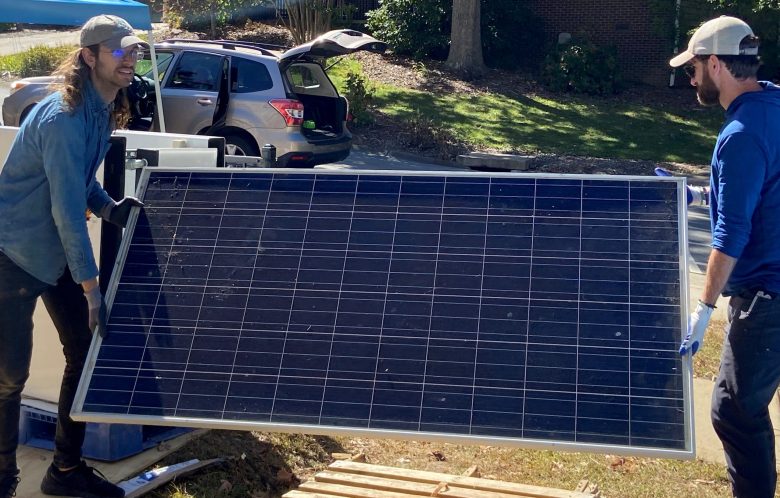
The rationale for diesel and gas generators is simple: they’re widely available. They’re relatively easy to operate. Assuming fuel is available, they can run 24-7, keeping people warm, fed, and connected to their loved ones even when the electric grid is down. Indubitably, they save lives.
But they’re not without downsides. The burning of fossil fuels causes not just more just more carbon that exacerbates the climate crisis, but smog and soot-forming air pollutants that can trigger asthma attacks and other respiratory problems.
In Puerto Rico after Hurricane Maria, generators were so prevalent after the electric grid failed that harmful air pollution in San Juan soared above the safe legal limit. The risk is especially acute for sensitive populations who turn to generators for powering vital equipment like oxygenators.
There are also practical challenges. Generators aren’t cheap, retailing at big box stores for more than $1,000. Once initial fuel supplies run out — as happened in parts of Western North Carolina in the immediate aftermath of Helene — it can be difficult and costly to find more. And the machines are noisy, potentially harming health and creating more stress for aid workers and the people they serve.
Heegaard witnessed these challenges firsthand in Guinea in 2016 when he was responding to an Ebola outbreak. A paramedic, his job was to train locals to collect blood samples and store them in generator-powered refrigerators that would be motorcycled to the city of Conakry for testing. He had a grant to give cash reimbursements to the lab techs for the fuel.
“This is so hard already, and the idea of doing a cash reimbursement in a super poor rural country for gas generators seems really hard,” Heegaard recalled thinking. “I had heard of solar refrigerators. I asked the local logistician in Conakry, ‘Are these things even possible?’”
The next day, the logistician said they were. They could be installed within a month. “It was just a no-brainer,” said Heegaard. “The only reason we hadn’t done it is the grant wasn’t written that way.”
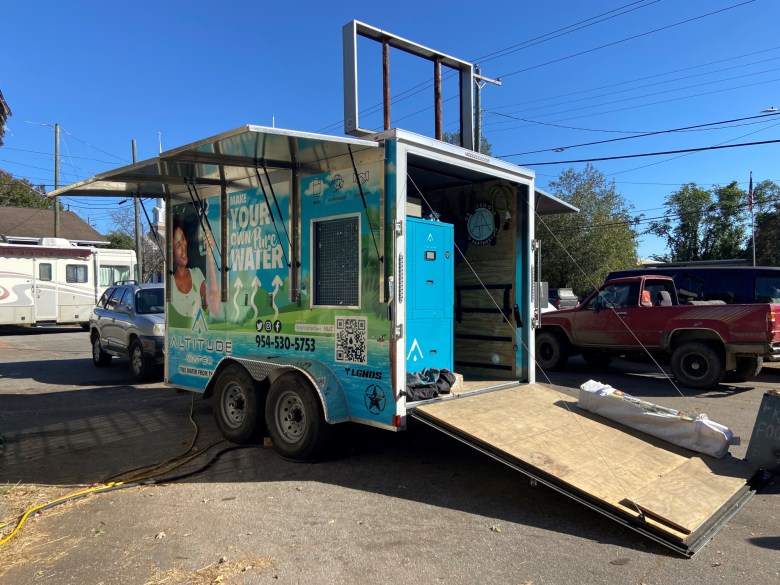
Two years later, the Footprint Project was born of that experience. With just seven full-time staff, the group cycles in workers in the wake of disaster, partnering up with local solar companies, nonprofits and others, to gather supplies and distribute as many as they can.
They deploy solar-powered charging stations, water filtration systems, and other so-called climate tech to communities who need it most — starting with those without power, water, or a generator at all, and extending to those looking to offset their fossil fuel combustion.
The group has now built nearly 50 such solar-powered microgrids in the region, from Lake Junaluska to Linville Falls, more than it has ever supplied in the wake of disaster. The recipients range from volunteer fire stations to trailer parks to an art collective in West Asheville.
Mike Talyad, a photographer who last year launched the collective to support artists of color, teamed up with the Grassroots Aid Partnership, a national nonprofit, to fill in relief gaps in the wake of Helene. “The whole city was trying to figure it out,” he said.
Solar panels from Footprint that initially powered a water filter have now largely displaced the generators for the team’s food trucks, which last week were providing 1,000 meals a day. “When we did the switchover,” Talyad said, “it was a time when gas was still questionable.”
Last week, the team at Footprint also provided six solar panels, a Tesla battery, and charging station to displace a noisy generator at a retirement community in South Asheville.
The device was powering a system that sucked water from a pond, filtered it, and rendered it potable. Picking up their jugs of drinking water, a steady flow of residents oohed and aahed as the solar panels were installed, and sighed in relief when the din of the generator abated.
“Most responders are not playing with solar microgrids because they’re better for the environment,” said Heegaard. “They’re playing with it because if they can turn their generator off for 12 hours a day, that means literally half the fuel savings. Some of them are spending tens of thousands of dollars a month on diesel or gas. That is game changing for a response.”
Footprint’s robust relief effort and the variety of its beneficiaries is owed in part to the scale of Helene’s destruction, with more than 1 million in North Carolina alone who initially lost power.

“It’s really hard to put into words what’s happening out there right now,” said Matt Abele, the executive director of the North Carolina Sustainable Energy Association, who visited in the early days after the storm. “It is just the most heartbreaking thing I’ve ever seen — whole mobile home parks that are just completely gone.”
But the breadth of the response is also owed to Footprint’s approach to aid, which is rooted in connections to grassroots groups, government organizations, and the local solar industry. All have partnered together for the relief effort.
“We’ve been incredibly overwhelmed by the positive response that we’ve seen from the clean energy community,” Abele said, “both from an equipment donation standpoint and a financial resources standpoint.”
Some four hours east of the devastation in Western North Carolina, Greentech Renewables Raleigh has been soliciting and storing solar panels and other goods. It’s also raising money for products that are harder to get for free — like PV wire and batteries. Then it trucks the supplies west.
“We’ve got bodies, we’ve got trucks, we’ve got relationships,” said Shasten Jolley, the manager at the company, which warehouses and sells supplies to a variety of installers. “So, we try to utilize all those things to help out.”
The cargo is delivered to Mars Hill, a tiny college town about 20 miles north of Asheville that was virtually untouched by Helene. Through a local regional government organization, Frank Johnson, the owner of a robotics company, volunteered his 110,000-square-foot facility for storage.
Johnson is just one example of how people in the region have leapt to help each other, said Abele, who’s based in Raleigh.
“You can tell when you’re out there,” he said, “that so many people in the community are coping by showing up for their neighbors.”
To be sure, Footprint’s operations aren’t seamless at every turn. For instance, most of the donated solar panels designated for the South Asheville retirement community didn’t work, a fact the installers learned once they’d made the 40-minute drive in the morning and tried to connect them to the system. They returned later that afternoon with functioning units, but then faced the challenge of what to do with the broken ones.
“This is solar aid waste,” Heegaard said. “The last site we did yesterday had the same problem. Now we have to figure out how to recycle them.”
It’s also not uncommon for the microgrids to stop working, Heegaard said, because of understandable operator errors, like running them all night to provide heat.
But above all, the problem for Footprint is scale. A tiny organization among behemoth relief groups, they simply don’t have the bandwidth for a larger response. When Milton followed immediately on the heels of Helene, Heegaard’s group made the difficult choice to hunker down in North Carolina.
With climate-fueled weather disasters poised to increase, the organization hopes to entice the biggest, most well-resourced players in disaster relief to start regularly using solar microgrids in their efforts.
As power is slowly restored across the region, with just over 5,000 remaining without electricity, there’s also the question of what comes next.
While there’s a parallel conversation underway among advocates and policymakers about making microgrids and distributed solar a more permanent feature of the grid, Footprint also hopes to inspire some of that change from the ground up. Maybe the volunteer fire station decides to put solar panels on its roof when it rebuilds, for instance.
“We can change the conversation around resilience and recovery by directly pointing to something that worked when the lights were out and debris was in the street,” Heegaard said.
As for the actual Footprint equipment, the dream is to create “lending libraries” in places like Asheville, to be cycled in and out of community events and disaster relief.
“The solar trailer or the microgrid or the water maker that went to the Burnsville elementary school right after the storm – that can be recycled and used to power the music stage or the movie in the park,” Heegaard said. “Then that equipment is here, it’s being utilized, and it’s available for the next response, whether it’s in Knoxville or Atlanta or South Carolina.”
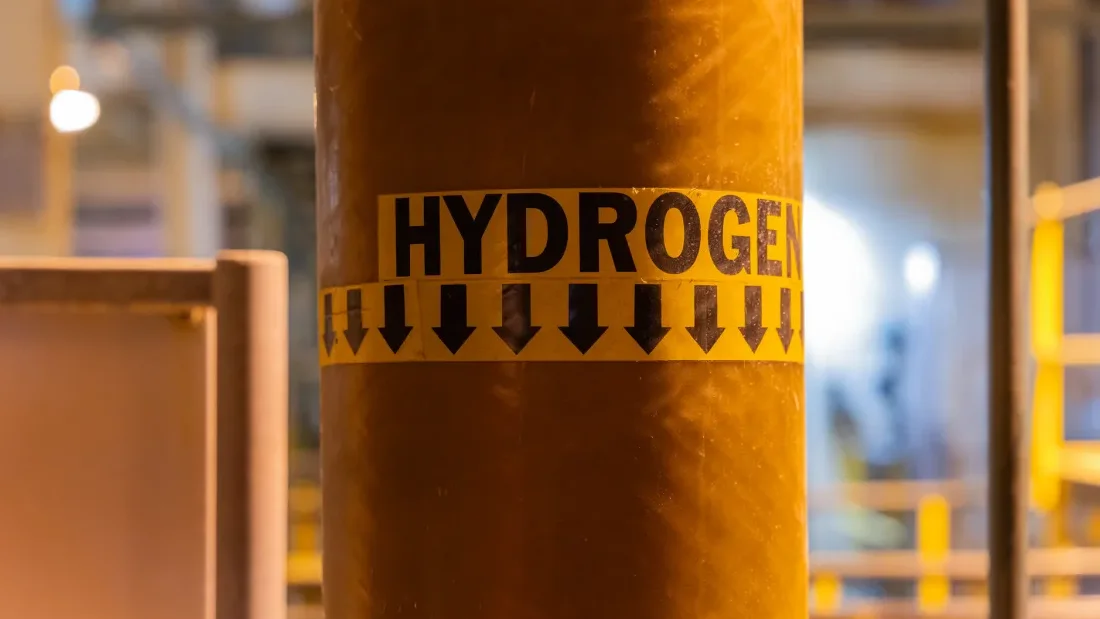
A year ago, the U.S. announced ambitious plans to build large-scale clean hydrogen hubs. Now, 12 months later, those plans have advanced little and are still shrouded in uncertainty.
Last October, the U.S. Department of Energy picked seven consortiums across the country to receive up to $7 billion in federal grants. The goal of this startup money? To help the hubs attract tens of billions more in private-sector investment to pay for construction costs. These projects, located around the country, aim to bring together a wide array of organizations to scale up the production, storage, and transport of low- and zero-carbon hydrogen, which some experts view as a way to replace fossil fuels in industries such as steelmaking and aviation.
There’s still little publicly available information to indicate whether these “clean hydrogen hubs” are likely to attract the needed private sector investment, however. Just as opaque are their potential community and climate impacts.
Environmental groups, community advocates, and energy experts have grown concerned that the projects are off track — and increasingly dismayed that the DOE and the hub projects are not giving them the transparency needed to confirm or deny these worries.
This puts the DOE’s Office of Clean Energy Demonstrations, the agency responsible for the H2Hubs program, in a tricky position.
The $7 billion in H2Hub awards is being doled out in phases, over the course of many years. It’s OCED’s job to make sure the hubs are hitting the technical, financial, and community-benefit milestones needed to earn these disbursements.
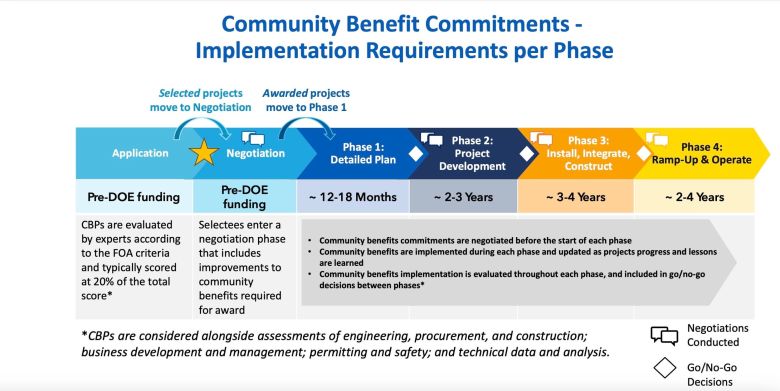
The hydrogen hubs are a cornerstone of not only the Biden administration’s clean hydrogen strategy, but its overall approach to clean energy. Without the hubs, the U.S. may not be able to supply the tens of millions of tons per year of clean hydrogen needed to decarbonize key industries in the decades to come.
“We know that jump-starting a new clean energy economy in the U.S. is going to take time and public and private sector investment,” Kelly Cummins, OCED’s acting director, told Canary Media in an October interview. “To do that right and make sure it’s sustainable, we need to engage communities in a new way.”
However, community and environmental groups hounding the hydrogen hubs and DOE for information over the past year say that engagement isn’t happening. The Natural Resources Defense Council reported in May that “environmental justice advocates and frontline communities have largely been kept in the dark on key details and basic information about many of these projects.”
Since then, relatively little additional information has emerged. “We’re still struggling at this point to understand what’s really going on with the hubs,” said Morgan Rote, director of U.S. climate at the Environmental Defense Fund (EDF), another nonprofit group that’s been tracking the disconnect between hydrogen hubs and communities.
“I don’t think DOE is sitting on a whole wealth of information they’re not sharing,” Rote said. “But that makes it even more challenging — and it’s no wonder communities feel like they don’t have information, if the DOE doesn’t have information.”
Cummins acknowledged these frustrations.“The tension here is that we’re still in early days,” she said. “We’ve been working to engage communities and special interest groups. But we’re just at the start of this learning process.”
The initial planning grants are just the first step in what OCED expects to be an eight- to 12-year pathway to full-scale ramp-up and operations. Each stage will involve its own series of “go/no-go” decisions, with a “long list of deliverables and criteria,” Cummins said.
To date, only three hubs have been awarded first-phase planning grants of about $30 million each: the ARCHES hub in California; the Pacific Northwest Hydrogen Association(PNWH2), which includes Oregon, Washington, and Montana; and the Appalachian Regional Clean Hydrogen Hub (ARCH2), which includes Ohio, Pennsylvania, and West Virginia. The remainder are still in the process of negotiating final approval for their first-phase funding.
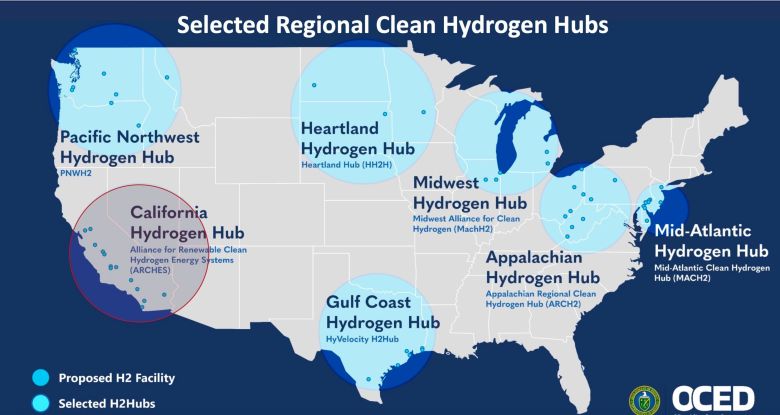
“We’ll go through a review of all that — the financing, the technology, the community benefits — and then make a decision if they’re ready to move from Phase One to Phase Two,” she said. “And there are some instances where we might decide they are not moving to Phase Two.”
Less than 1 percent of global hydrogen production today is low-carbon. Of the roughly 90 million tons per year produced globally and 10 million tons per year in the U.S., almost all is derived from fossil gas.
Right now, the two main methods for making low- or zero-carbon hydrogen are far more expensive than dirty hydrogen — and also untested at scale. Those include so-called “blue hydrogen,” which is made from fossil gas combined with carbon capture, and “green hydrogen,” which is made by splitting water in electrolyzers powered by zero-carbon electricity.
The hydrogen hubs need about $40 billion in private-sector investment to match DOE’s $7 billion. That’s a tough sell for investors, given the uncertain economics involved both for would-be clean hydrogen producers and for the industries that must invest in retrofitting facilities, building new infrastructure, and reconfiguring how they do business in order to use it.
What’s more, the rules for a subsidy that could make clean hydrogen cost-competitive with dirty hydrogen — the 45V production tax credits created by the Inflation Reduction Act — have yet to be finalized.
Last December, the U.S. Treasury Department proposed rules that would require green-hydrogen producers to source newly built and consistently deliverable clean electricity — restrictions that energy analysts say are vital to ensure hydrogen production doesn’t end up increasing carbon emissions.
But those proposed rules are being challenged by a number of industry groups and politicians who say they’ll stifle the nascent industry — including the seven hydrogen hubs themselves. The Treasury Department aims to finalize the rules by January.
The regulations for blue hydrogen remain another point of contention. Only the California and Pacific Northwest hubs have pledged to not make hydrogen from fossil gas. Some hubs, such as the Appalachian hub, have made blue hydrogen a focus. But blue hydrogen has yet to be proven to be cost-effective at scale, and in some cases could lead to more carbon emissions than simply using fossil gas.
The unresolved nature of these regulations — and the projects themselves — makes it impossible to tell at this point whether the hubs will actually help fight climate change.
In a May letter to DOE, U.S. Representatives Jamie Raskin (D-Maryland) and Donald S. Beyer Jr. (D-Virginia) complained that the agency has touted the potential for hydrogen made by the hubs to reduce carbon emissions by 25 million metric tons per year, but has “yet to publish the projected lifecycle emissions linked to the production of hydrogen.”
That information is “overdue and critical for us to fully understand the precise climate and public health impacts of the H2Hubs program,” the lawmakers wrote. “Scientists have warned that high levels of lifecycle emissions from hydrogen production could entirely cancel out any climate benefits from replacing fossil fuels with hydrogen.”
Cummins noted that DOE has responded to this request for information. “But the response was focused on the fact that we are evaluating every aspect of the production and use of hydrogen so that we can understand the impact on the environment,” she said — and much of that work remains to be done.
Though it may be early days for the hubs, advocates say the projects could be operating in a much more transparent way.
OCED released summaries of each hub’s commitment to community benefits immediately after the hubs were selected last October. Since then, OCED has held more than 70 meetings with more than 900 individuals and groups participating, Cummins said. The office has also briefed about 4,000 individuals and groups, including community members, environmental justice organizations, labor and workforce organizations, first responders, local businesses, energy professionals, elected tribal leaders, and local, state, and federal government officials.
The feedback from those meetings has led OCED to add new requirements for the hubs. The projects now must create public data reporting portals to share information as it’s finalized. They must develop community advisory structures that allow groups to provide feedback on plans as they’re developed. And they must “jointly evaluate or pursue negotiated agreements” on labor, workforce, health and safety, and community benefits plans.
“We’re really focused on three-way communication” between OCED, hub participants, and affected communities and other groups “to make sure anything we’re hearing back from the community is adequately addressed,” Cummins said. “That will determine whether we move forward to the next phase of the process.”
Environmental and community groups worry these requirements may still not prevent hub participants from running roughshod over communities, however.
In particular, many fear that participants — including oil and gas giants such as bp America, Chevron, Enbridge, EQT, ExxonMobil, Sempra Energy, and TC Energy — will subject communities already burdened with fossil fuel pollution to further harms from hydrogen production.
Communities have “questions around the transparency for the selection and planning process, how to monitor and evaluate community benefits plans, and to ensure there are sustained community benefits after the duration of the grants,” said Cihang Yuan, a senior program officer at the environmental nonprofit World Wildlife Fund. Other concerns include “more local impacts, such as hydrogen leakage or chemical disasters,” she said. “It’s definitely important for these hubs to have a solid plan for safety of operations.”
The secretive approach that hubs have taken to sharing information with potentially affected communities has added to these concerns. In California, the ARCHES hub requires meeting participants to sign non-disclosure agreements barring them from sharing information about the hub’s activities under threat of legal penalties.
“That’s something we can’t do,” said Theo Caretto, associate attorney at California-based environmental justice group Communities for a Better Environment (CBE), since it would bar community groups from sharing information with their constituents.
Those non-disclosure rules have remained in place at ARCHES and other hubs despite continual protests, forcing groups like CBE to wait for public information to dribble out. But one year in, “we’re having difficulty getting specifics on which projects are being funded,” Caretto said. “They’ve given out fact sheets and publications,” such as the map and chart below in a May report from ARCHES to DOE. “But those are still quite general and don’t give specifics about what each project is.”
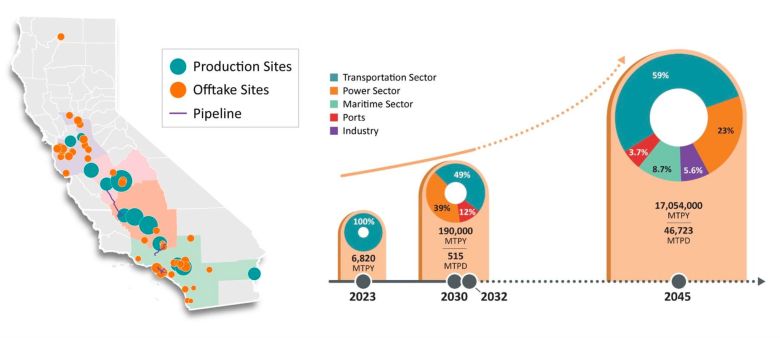
The Ohio River Valley Institute has raised similar concerns about the ARCH2 project in Appalachia. In a May letter to DOE signed by 54 nonprofit and community groups, Tom Torres, the institute’s hydrogen campaign coordinator, said communities have had “no substantive opportunity to shape this proposal while negotiations continue behind closed doors.”
The saving grace, he wrote, is that “nothing so grievous has been done that cannot be undone. Money has yet to flow to these projects and ground has not been broken.”
Giving communities authority over how major energy infrastructure is planned and built would be a departure from how large industrial projects have historically been pursued.
“There is this dichotomy, this tension, between the project development deadlines and long-term robust engagement processes that will be needed to meet these community benefits plans obligations and gain community trust,” said Mona Dajani, global co-chair of energy, infrastructure and hydrogen at law firm Baker Botts and lead counsel for the HyVelocity hub in Texas.
DOE’s commitment to ensuring that hubs will meet the Biden administration’s Justice40 Initiative — its pledge to direct at least 40 percent of climate-related federal spending to communities “historically impacted by energy development and burdened with policies of exclusion and disinvestment,” as Dajani put it — heightens the importance of community involvement.
This will “add a lot of complexity to development processes. But they’re doing their best.
It’s definitely going to be challenging to be transparent when it’s not all finished,” Dajani said.
Amidst questions around community benefits and lifecycle carbon emissions, much of the hype that fueled oversized clean-hydrogen projections in the past few years has started to deflate. Major project announcements have been delayed or put in limbo, leading analysts to question whether ambitious government clean-hydrogen production targets can be reached in the coming decade.
This retrenchment is also a threat to U.S. hydrogen hubs, which must convince companies and their financial backers to commit to the tens of billions of dollars of investment needed to scale up clean hydrogen to compete against the fossil fuels it is meant to displace.
That challenge is already rearing its head at the Appalachian ARCH2 hub, a pet project of a lawmaker key to getting the hydrogen hub program passed as part of the 2022 Bipartisan Infrastructure Bill — retiring Democratic U.S. Senator Joe Manchin of West Virginia.
Manchin praised the ARCH2 hub’s potential to revitalize the economy of his home state and the greater Appalachian region at an August event marking DOE’s approval of its first-phase grant. “I’m happy to know that I was able to play a part in this to be able to have a future for my children and grandchildren,” he said.
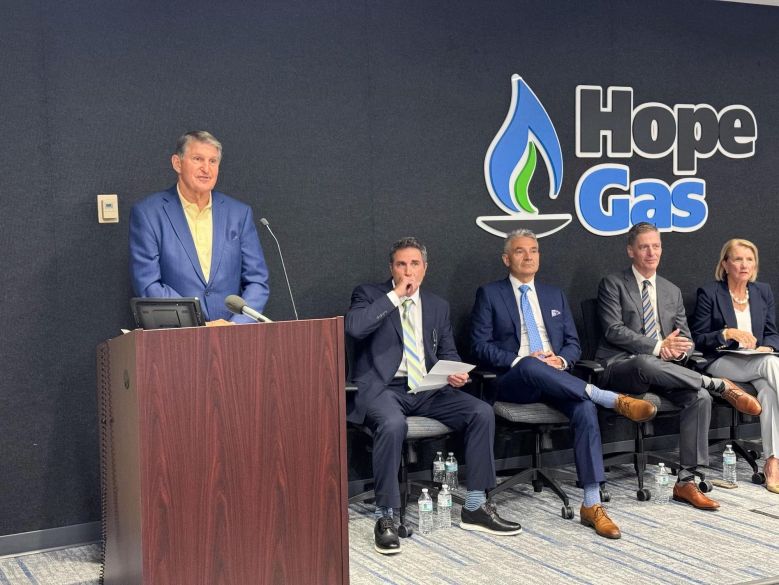
But, as is true for all of the hub projects at this point, it’s far from clear that ARCH2 will deliver on its promise of becoming a clean energy economic engine for the region.
In a report released this week, the Ohio River Valley Institute noted that several projects initially identified as part of the ARCH2 plan have since dropped out. Those include Canadian gas producer and pipeline owner TC Energy and industrial chemicals giant Chemours, which canceled plans to develop two green hydrogen production sites in West Virginia.
“The various hydrogen hubs and their individual projects are much more tenuous than many people imagine,” Sean O’Leary, senior researcher at the Ohio River Valley Institute and the author of the report, told Canary Media. “These projects are still heavily dependent on private markets to come up with the funds.”
In an attempt to fill the gap left by those departures, ARCH2 recently issued a call for companies to propose projects, which could receive up to $110 million if selected. “Originally you could argue that we had projects that were seeking federal funds,” O’Leary said. “Now, we have federal funds seeking projects.”
Cummins said that OCED has anticipated that hub participants may drop out or be added throughout the early stages. “That’s OK. We don’t want a company that for any reason doesn’t want to participate to be stuck in something they don’t see as economically viable.”
At the same time, OCED will vet new entrants on the same criteria applied to those that initially applied: “Are they technically feasible? Do we see a path to financial viability? What does their workforce plan look like? And finally, what do their community benefits look like?”
In an email to Canary Media, T.R. Massey, spokesperson for Battelle, the research organization managing the ARCH2 hub, echoed a key refrain about the projects: “The important context to remember is these new hydrogen hubs, including ARCH2, have just entered the first phase.”
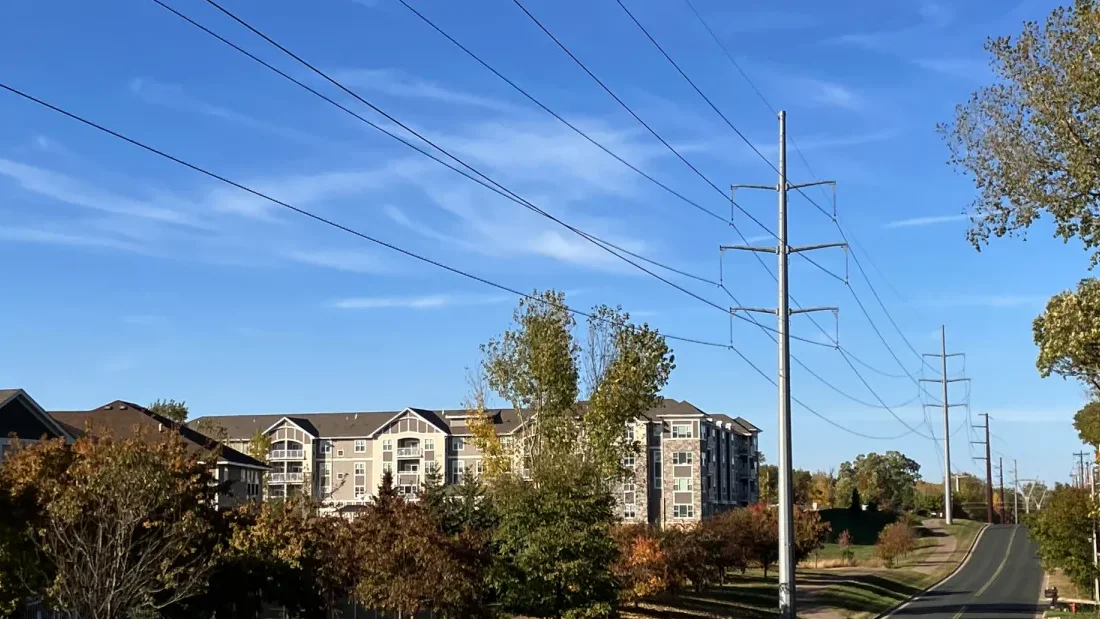
More Minnesota cities are turning to utility customers to fund climate and sustainability projects.
The Twin Cities suburb of Eagan is among the latest municipalities to begin collecting what’s known as a “franchise fee” from gas and electric companies in exchange for allowing pipelines, power lines and other infrastructure in public rights-of-way. The charges are typically passed on to customers in the form of a small monthly line item on their utility bills.
As is the case with a growing number of cities, Eagan leaders last year decided to dedicate funds from its franchise fees toward its climate and sustainability efforts. It hired its first sustainability coordinator and is drafting a climate action plan that will be implemented in part with the expected $1.5 million in annual franchise fee revenue.
“It’s hard to launch a sustainability initiative without a way to sustain it,” said Gillian Catano, the city’s sustainability coordinator. “This helps us with long-term planning and allows us to work on projects supporting our operations and to support projects in the community.”
Cities have collected franchise fees from public utilities for decades, but today the charges are emerging as a potentially important revenue source to help budget-strapped local governments make progress toward climate targets. In the Twin Cities, Minneapolis has long used the fees to fund sustainability work, and St. Paul is considering a plan to do the same. Other examples include the suburbs of Edina and Hopkins.
“We’ve seen a growing number of cities, across Minnesota and nationally, leveraging utility franchise fees as a tool to fund climate action and sustainability efforts,” said Julia Eagles, associate director of utility and regulatory strategy for the Institute for Market Transformation, a national nonprofit that promotes public policy to reduce building emissions. “It reflects a broader shift towards cities seeking stable, locally controlled funding sources for urgent climate priorities.”
A National Renewable Energy Laboratory research paper in 2021 found over 3,600 municipalities collect franchise fees from their utilities and 13% use part of that money for clean energy-related projects. The work being funded by franchise fees include energy efficiency programs, municipal fleet electrification, solar panel installations, and other clean energy-related investments.
Abby Finis, a consultant who works with local governments on climate action, said in the past, many cities added the fees into the general fund to pay for various city services. What’s different now, she said, is that more communities are tying them to sustainability staff and projects.
“The franchise fee is something that’s already set up, and you can increase it a little bit without hurting people’s wallets too much,” Finis said.
However, Finis cautioned that the money doesn’t “get anywhere near the amount needed to reach our goals.”
Sometimes cities are maximizing those dollars by using them to leverage additional funds, such as through the federal Inflation Reduction Act or Minnesota’s ECO (Energy Conservation and Optimization) Act, she said.
Minneapolis uses its franchise fees to fund a unique partnership between the city and utilities Xcel Energy and CenterPoint Energy. The National Renewable Energy Laboratory’s research highlighted the partnership, which was intended to accelerate progress toward the city’s climate goals but has faced questions about its effectiveness. The city increased its franchise fee in 2023, a per-household increase of about $12 per year, according to Patrick Hanlon, the city’s deputy coordinator for sustainability.
“It was a pretty minimal increase for residential customers,” Hanlon said. Projects funded partly by franchise fees have saved city residents more than $150 million annually in energy costs and helped weatherize more than 5,000 low-income units, he added.
Hanlon is also mayor of the nearby suburb of Hopkins, which recently started using its franchise fees to pay for solar, e-bike and electric vehicle charging initiatives.
St. Paul Mayor Melvin Carter recently proposed charging residential franchise fees to fund weatherization, tree planting, and pay the salary of a new climate action coordinator.
In the past, St. Paul’s climate action budget has come from general funds and grants.
“This would be the first uniquely dedicated funding for the city’s broad portfolio of climate work,” said Russ Stark, the city’s chief resilience officer.
Edina began using franchise fees for clean energy projects in 2015. Today, according to sustainability manager Marisa Bayer, the suburb commits about $950,000 annually from franchise fees for its sustainability programs, most of which is invested in city operations to improve efficiency, add renewable energy, and electrify municipal buildings and transportation. The money also funds a sustainable building ordinance and other policy measures.
“The great thing is that because we have this dedicated funding source, we can move forward with projects, either identified in our capital improvement plans or supported by our community,” Bayer said. “We don’t have to go to council every year or rely solely on grants to help fund this work.”
Correction: Edina commits $950,000 annually from its franchise fees for sustainability programs. An earlier version of this story mischaracterized the number.
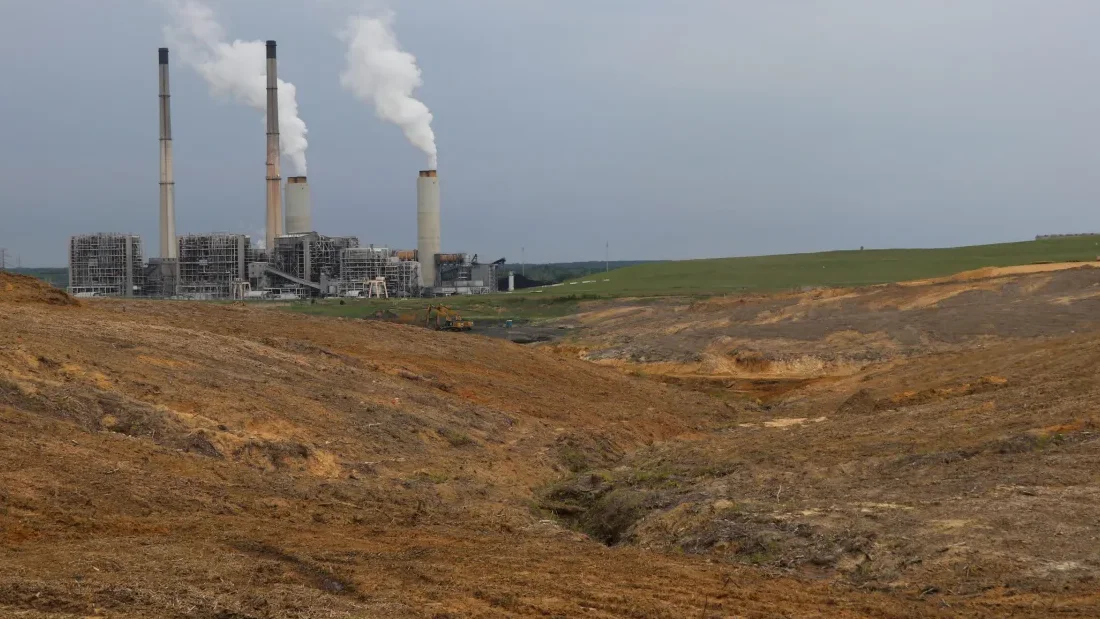
EMISSIONS: The U.S. Supreme Court declines to pause the Biden administration’s power plant emissions rule as it faces legal challenges, though Justice Brett Kavanaugh’s opinion suggests those challenges may ultimately be successful. (Associated Press, E&E News)
ALSO:
NUCLEAR:
CLEAN ENERGY: A growing number of cities across Minnesota and the U.S. are funding climate and clean energy projects with franchise fees collected from utilities using public rights-of-way for infrastructure. (Energy News Network)
COAL: An Alabama coal-fired power plant is named as the U.S. EPA’s top greenhouse gas polluter for the ninth year in a row, but owner Alabama Power has no plans to retire the plant or convert it to natural gas. (Inside Climate News)
LITHIUM: General Motors pledges $625 million to help fund the contested Thacker Pass lithium mine under development in Nevada in an effort to boost battery material’s domestic supplies. (Las Vegas Review-Journal)
SOLAR: Homeowners looking to install rooftop solar panels often run into a dilemma when they learn their roofs will need to be replaced before the lifespan of their array expires. (Grist)
HYDROGEN: A large hydrogen fuel production facility in upstate New York was expected to make the state an industry leader, but work on the project has halted and its future is uncertain. (Heatmap News)
BIOFUELS:

RENEWABLE ENERGY: The New York Power Authority seeks proposals to deliver as much as 575 MW of renewable energy to New York City through an existing transmission line. (Utility Dive)
ALSO: Environmental activists claim the New York Power Authority’s draft plan to create 3.5 GW of renewable power fails to do enough to help the state meet its clean energy goals. (City and State New York)
OFFSHORE WIND:
BIOMASS: The Burlington Electric Company in Vermont is negotiating to acquire full ownership of the state’s largest power producer, a wood-burning plant that has been controversial in recent years. (VT Digger)
ELECTRIC VEHICLES: Pennsylvania legislators consider measures that would legalize the use of e-scooters on public streets and create rules of the road for the vehicles. (Pennsylvania Capital-Star)
HEAT PUMPS: A Massachusetts town pilots a new way of financing heat pump installations that could be scaled up to speed adoption statewide. (MassLive, subscription)
COMMUNITY CHOICE: Customers of Providence, Rhode Island’s community choice aggregation program will pay less this winter for a power supply that includes more renewable energy than the default utility product in the state. (Boston Globe)
GRID:
TRANSMISSION: Baltimore City Council considers whether to pass a resolution opposing a proposed 70-mile transmission line that some councilors say would damage farmland and hurt property values. (Baltimore Sun, subscription)
ELECTRIC VEHICLES:
COMMENTARY: Wind energy could lower electricity costs for Connecticut residents by lessening the impact of natural gas price spikes, says an energy analyst. (CT Mirror)
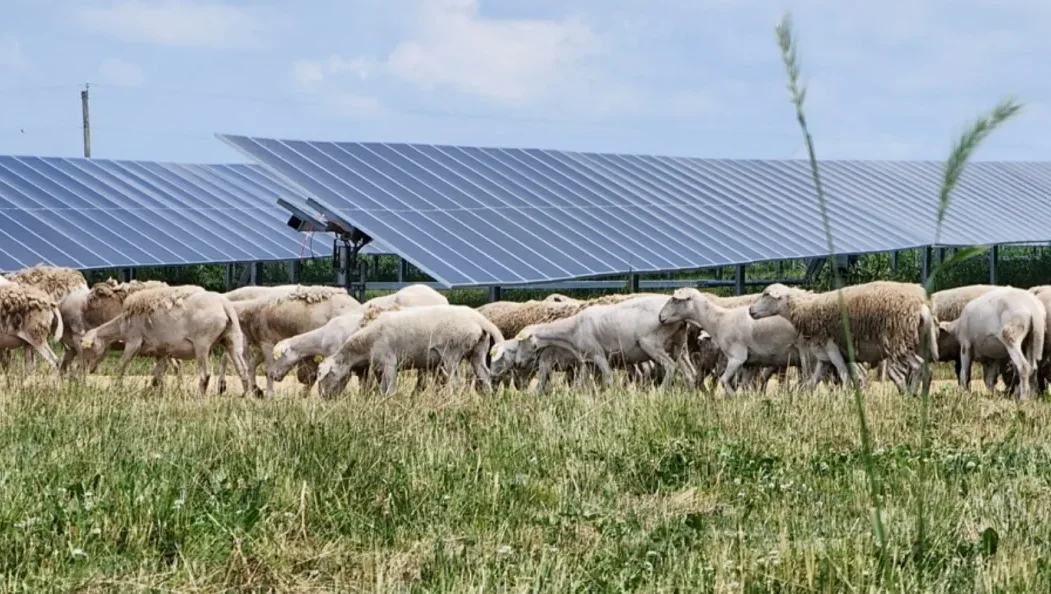
When farmer Trent Gerlach found out a solar farm would be built on the land he had long worked in northwestern Illinois, he was disappointed.
“As a farmer, seeing that land taken out of production is difficult, when you farmed it for many years, you’ve been stewards to that land, fertilized that land, taken care of it as if it was your own,” he said.
Gerlach’s family had been raising corn, soybeans and livestock since 1968, and like many farmers, they leased farmland in addition to working their own land. And when the owner of one of those leased parcels decided to work with Acciona Energia to help site its High Point wind and solar farm, Gerlach initially was not enthusiastic.
“The thought of taking productive farm ground out of production with solar panels was not, in my personal opinion, ideal,” he said.
But Gerlach was determined to make the best of the situation.
Ultimately, that meant a win-win arrangement, where Acciona pays him to manage vegetation around the 100 MW array of solar panels that went online in early 2024. Gerlach does that with a herd of 500 sheep.
“We don’t own the land, we don’t get a say — that’s landowners’ rights, and I’m very pro that,” Gerlach recounted. “In U.S. agriculture, the biggest thing that gets farmers in trouble is saying, ‘that’s how we’ve always done it so that’s what we’re going to do.’ Renewable energy is probably not going anywhere, whether you’re for or against it, it’s coming, it’s what’s happening. As an agriculture producer, we’re going to adapt with it.”
Researchers around the country are exploring agrivoltaics, or co-locating solar generation with agriculture in a mutually beneficial way. Projects range from growing tomatoes in California to wild blueberries in Maine, with varying levels of success.
Acciona regional manager Kyle Charpie said that sheep grazing appears an especially promising form of agrivoltaics, and one that the company is likely to continue exploring globally. Solar operators need to keep vegetation controlled, and sheep are a more effective and ecological way to do it than mechanized mowing. Acciona has long had a sheep agrivoltaic operation in Portugal, Charpie noted, and two projects in Texas are underway.
“It’s incredibly cost-effective — sheep don’t break down like a tractor; if a tractor blows a belt, you’ve lost a whole day of cutting,” he said. “These grasses grow wickedly fast, it’s that constant presence of the sheep that’s been super super effective. It aligns with our sustainability goals.”
“It’s tough to say we’re the greatest renewable company in the world [if] we have a bunch of tractors running up and down our fields belching out CO2,” he continued.
Another advantage, Charpie said, is that at the end of the solar array’s lifespan, the land beneath it will be restored and refreshed.
“We have all these sheep now who will spend 30-plus years breathing, living, using their hooves to churn up ground, even dying; it’s the circle of life,” he said. “When these farms get turned back to the families, that soil condition will be wonderful.”
Gerlach’s family had about 50 ewes when the idea for grazing around the solar panels struck. He “hounded” Acciona, in Charpie’s words, to bring an agrivoltaic deal to fruition.
“He saw an opportunity here, and he has been his own best advocate, banging down the door, checking how close are we, when will we get our sheep here,” Charpie said.
Gerlach ultimately bought about 500 sheep of two types: Dorper and Katahdin, small breeds that can fit easily under solar panels.
“The panels create lots of shade — during the heat of the day, they’ll all be underneath the panels for shade,” Gerlach said. “In early mornings, late evenings they’re out grazing aggressively. They don’t bother the panels one bit.”

Gerlach said his family “used to raise livestock like everybody did back in the day,” and his farm has won awards for its cattle, but raising livestock has become less profitable in recent years. Agrivoltaics offer an opportunity to delve back into raising sheep, something Gerlach loves. A commercial sheep operation would only be possible with the payments for vegetation management, he said.
“Raising sheep in the United States is challenging because the market for sheep is not very high,” he said. There’s not much of a domestic wool market, and “the meat side of sheep and lamb never really caught on in the U.S. — we’re a beef, pork, poultry-consuming country.”
Gerlach sells the bulk of his lambs around the Easter season, and largely for kosher and halal consumption. Since that market is so limited, the ewes largely earn their keep being paid to graze.
“We love providing stewardship to the animals. That’s what U.S. agriculture was built on hundreds of years ago,” Gerlach said. “It marries really well with our crop production” on nearby land. “In agriculture you need diversification. By bringing sheep and livestock production in, we can afford to hire more full-time employees.”
Sheep are the livestock best suited to agrivoltaics, stakeholders agree.
“You can’t use cattle because they’re too large, they would rub on the panels and break them,” Gerlach said. “You can’t use goats because goats would climb on the panels, and they’re natural chewers, they would chew on the wires.”
The High Point solar array is divided up into separate plots with fences, “like perfect little pens for the sheep,” added Charpie.
In a bigger uninterrupted plot, a farmer would likely need to move water sources for sheep strategically around the area to make sure the animals cover the entire plot. Gerlach’s flock only grazes about a fifth of the Acciona solar array. He’s hoping to expand, though feeding and sheltering sheep during the winter when they can’t graze is costly.
“I’ve got three young kids. Hopefully we raise them in agriculture. It’s such a good practice for our young people to learn responsibility and stewardship,” Gerlach said.
“[The animals] come first, they get fed and watered and taken care of before us. Sometimes agriculture gets portrayed in a poor light, especially larger production agriculture. I try to really push that that’s not everybody. Talk to a local farmer, a local person — you generally see that we’re stewards of the land, we want healthy ground and livestock. That can marry in fine with clean energy.”